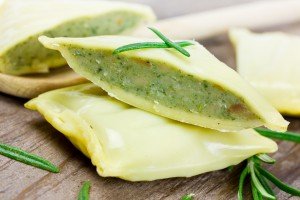
By Teri Weiss
Special to The Citizen
The so-called “Fastenzeit” or Lent is almost over. The term comes from the Middle English word lenten, meaning “spring” and signifies the 40 days of fasting before Easter Sunday.
Ever since the 10th century, the church calendar of traditions prescribed seven weeks of repentance and abstinence in preparation for Easter, the most important Christian festival.
In the past, Lent really was a long, severe period of fasting when people were supposed to give up rich foods and alcohol. It was also the time for spring-cleaning of lives and homes. Nowadays, the church no longer imposes such a strict fast, though serious Christians still try to overcome faults by giving up luxuries and practicing self-discipline.
Alcohol, meat, butter, milk and eggs were forbidden during Lent until the 1500’s, when a few dispensations started to allow them.
There were several Lenten evasions or tricks that originated in monasteries that soon spread to Swabian gourmets, most famously in the form of “meat disguised and hidden in dough.” The most typical Swabian delicacy, the “national dish” of Württemberg, Maultaschen, were apparently invented in the early 17th century by the Cistercensian monks of Maulbronn Monastery (hence the name Maultaschen).
Not wanting to deprive themselves of a large piece of meat they had received during Lent, their cook concealed the forbidden food from the good Lord by grinding and mixing in lots of greens and herbs, parsley and spinach, and enclosing it all in pockets of dough, hence the diminutive nickname “Herrgottsb’scheisserle” (Fooling the Dear Lord).
One more variation on the theme of pretense and/or concealment: Medieval monasteries allowed fowl such as geese, ducks, fish and other water creatures to be eaten during Lent, and even beavers and otters were sometimes labeled “aquatic animals” in order to get them permitted as Lenten food. Reports from a southwest German cloister during the late 17th century reveal that an abbot tossed a roasted pig into the monastery well, pulled it out and stretching the definition of “fish-like” considerably, tried to pass it off as a carp for his dinner. Some seafood dishes were cleverly seasoned and shaped to resemble and even taste like roasted meat, among them the famous “Forellenbratwurst” made of trout.
Almost as old as Lenten customs are ideas and ways to bend or at least circumvent some of the rules of fasting. Since alcoholic beverages were prohibited, some clever German monks centuries ago already made “Starkbier,” a really strong brew. Labeled “liquid bread,” this Lenten beer became and remained part of the monks’ pre-Easter diet based on the old monastic rule: Liquida non frangunt ieunum (liquid does not break the fast).
Occasional cheating aside, Lenten and pre-Easter customs and traditions always emphasized the concepts of cleansing of body and spirit, contemplation and renewal.
